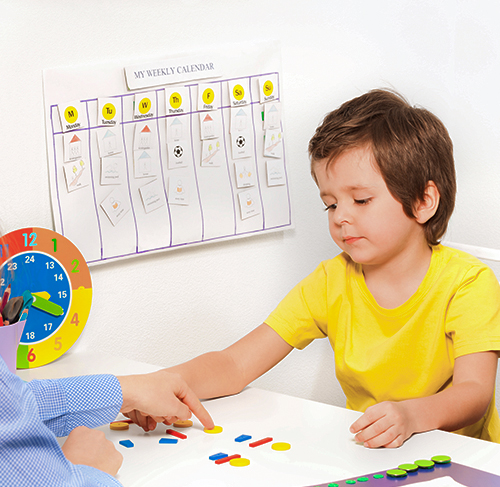As parents and caregivers, many of you have faced the daunting challenge of responding to a child who is on the brink of throwing a huge tantrum. In these situations, you want to be able to teach your child how to think rather than act out his feelings. So how can we go about this process—especially if we want to understand how to improve cognitive function through communication?
First, it’s important to understand that for the initial three years of development, a child is more attuned with his emotions than his ability to reason (Siegel & Bryson, 2011). This is partly due to the lack of language development at this age. Therefore, addressing your child’s emotional needs might be the primary objective. Secondly, by working on communication skills, you can gradually shift your child’s reliance on his emotions to higher cognitive functions. This process will vary depending on factors like your child’s current skill set, environment, and support system.
Using Communication to Build Thinking Skills
When we talk about improving your child’s cognitive function through communication, we’re referring to things like helping them pay attention, remember what happened, solve problems, and make better choices. These are all part of how a child learns to think. Every time you have a back-and-forth conversation with your child—asking how they feel, what happened, or what they could do differently—you’re not just helping with behavior. You’re also strengthening the part of the brain that helps them think clearly, stay calm, and plan ahead.
If your child is exhibiting negative behaviors due to feelings of anxiety or fear, address your child’s emotional needs first by validating his feelings. Use words that express empathy like “I’m sorry you had a bad day, I know your bruise hurts, or that dog really scared you.” In many cases, this response will be an appropriate way to soothe your child. It is important to note that if your child is exhibiting negative behaviors simply to get attention, this immediate approach might not be right for you. Please consult with your ABA provider who can give you additional information on how to achieve specific behavioral outcomes.
Once your child is calm, ask your child questions like:
- How are you feeling?
- What happened that made you feel this way?
- Did you make a good choice by acting out? (You can modify this question and be more specific)
- What is a good (better) choice you could have made?

If your child demonstrates difficulties with answering these questions, work on the following aims:
Understanding and Expressing Emotions:
- It is often the case that children use negative behaviors since they are not able to communicate effectively. This is why building your child’s language skills will help your child gradually replace the meltdowns with words. One way of doing this is by naming your emotions and modeling how you would manage yourself in a situation that is triggering. For instance, say things like “I am feeling mad that I cannot go on the trip but that’s okay because I am going to stay home and play games instead”. Doing this will help your child develop a vocabulary for different types of emotions. Another thing you can do is label your child’s emotions as he is experiencing them in real-time (Branstetter, 2014). For example, say things like “I see that you’re feeling sad because your friend needs to go home. Do you want to tell me more about that?”. Furthermore, gradually teach your child how to recognize the differences among a set of different facial expressions. Initially, keep it simple by presenting two to three pictures or photographs. Expand the set of choices as you observe progress in this area. During this task, say things like “show me the boy who is sad” or “point to the happy girl”. Other emotions can include frustrated, disappointed, mad, surprised, excited, and scared.
- Ask your child how he feels during his own emotionally charged situations.
- Support these concepts by using simple stories that can help your child understand how emotions affect everyday life.
Event Retelling:
- Practice sequencing simple 2–4-part stories using picture cards or real photographs. Start with sequencing 2-part stories and gradually expand this goal to a 4-part story. Here is an example of sequencing a 4-part story:
First, the girl rolls the dough
Then, she spreads the sauce
Next, she sprinkles the cheese
Last, she puts the pizza in the oven - Once your child is better with story retell, apply these skills during an emotionally reactive incident by asking your child “what happened?” Then help your child sequence what happened during the incident.
- Use sequential terms like first, then, next, and last to help your child organize his thoughts and retell what happened. Here is an example of what this could look like:
Dad: “What happened?”
Child: First, I have coloring homework. Then, you give me crayons. Next, I throw the crayons on the floor. Last, I scream.
- Practice sequencing simple 2–4-part stories using picture cards or real photographs. Start with sequencing 2-part stories and gradually expand this goal to a 4-part story. Here is an example of sequencing a 4-part story:
Making Choices:
- Teach your child how to make choices by introducing the concept of cause and effect.
- Here are some examples. Say things like:
- If you clean up, then you will get to choose another toy.
- If you brush your teeth, then you will hear your favorite story.
- If you finish coloring, then you can play a game.
- Each time your child makes a good choice, say things like: You made a good choice by cleaning up. Now you can choose another toy!
- Once your child understands these concepts, ask him questions like “Was that a good choice?” or “What is a better choice you could have made?” after an upsetting event that led to a meltdown.
- Be sure to give your child a “reward” only if he is being cooperative. If you do this consistently, your child will learn that each time he makes a good choice, he will either receive or engage in something he likes. This will increase the likelihood that your child will make optimal choices over time.
Conclusion
You can target these goals to help your child start thinking about how to make better decisions before resorting to a meltdown or tantrum. Over time, these small conversations add up. By encouraging your child to talk through emotions, retell events, and think about choices, you’re helping them build the tools they’ll need later in life—like solving problems, managing frustration, and staying focused at school.
These everyday communication moments can shape how your child learns, interacts with others, and handles challenges well into the future. Therefore, by working on your child’s language skills, you are also simultaneously fostering his higher cognitive functions. Follow us on Follow us on Facebook, Instagram, LinkedIn, and Twitter to stay on top of our latest updates.
References
Branstetter, R. (2014). The everything parent’s guide to children with executive functioning disorder: strategies to help your child achieve the time management skills, focus, and organization needed to succeed in school and life. Adams Media.
Siegel, D. J., & Bryson, T. P. (2011, January 1). The Whole-Brain Child: 12 Revolutionary Strategies to Nurture Your Child’s Developing Mind. Delacorte Press.






Leave A Comment